6/15: 14′ Bridge for Shaker Museum, Enfield NH
The Shaker community at Enfield NH powered their mills by collecting water from ponds and brooks high on the mountain via an aqueduct they dug in the 1840s. This ended at a reservoir about 20 yards across. It fed water into a brook that turned the water wheel of a two-story stone mill. The Shakers had a cart path that crossed the brook just downstream of the reservoir, and led to their road that climbed the mountainside to upper fields and woodlots.
After the LaSalette brethren bought the land in 1926, they build a bridge that was a slab of concrete on I-beams about 6" deep. By the early 2000s, that had collapsed. In early 2024, we agreed to replace that with a 14' bridge of PT (pressure treated) lumber, from Forest Service guidelines. The Museum bought the materials, which we prefabbed into a kit in their barn on the last Saturday of April. They were 2 sills 6x6x4', 3 stringers of 2 2x12x14', 20 blocking of 2x4x1' for the 10 diaphragms of 2x12x14.5". Then came roughsawn hemlock deck of 2x6x42", 10 posts of 48" PT 2x4s, 14' side rails, and a cap rail, all PT. We painted all cut ends with preservative, and left them to dry for six weeks, or through black fly season, whichever came first. This was a crew of four, at three hours each, or 12 hours.
Building day of Sat. 6/15 was dry and cool: 60s with a 10-15 mph NW breeze. We had the plans, and a written building sequence. We were seven volunteers, divided about equally between carpenters and helpers (like me).We had a generator from one of the carpenters, but the battery screw guns and skilsaw held out.
We drove to the site, bringing tools and then bridge parts in order of building. We had these tasks:
- Level and square the sills to have a 12' clear span over the brook.
- Screw blocking to stringers by outlines drawn on the stringers. Pass the stringers across the brook, square them on the sills, and bolt them in place with angle irons.
- Screw the 10 diaphragms to the 20 blocks so as to have on pair at each and plus 3 in the middle, evenly spaced. Roll 4" bituthene atop stringers and diaphragms so water doesn't pool there and rot the wood (I've seen a log bridge collapse under a sudden point load, and that was partly why. 11 YO it was).
- Lunch.
- Add deck, posts, 3 side rails, cap rail. Retrieve tools, tidy site. Drive to a store that had cold drinks. Crew meeting, 2024 job list handed out.
Seven crew, seven hours.49 hrs + 12 hrs = 61 hrs. Add some for my scouting, planning, etc, call it 70 hours on this 14' bridge BIG thanks to these volunteers!
We did work safe, and steady. We did have fun at this wee biggin, ah, building. But the photos show this better than I can.
The season has started. Hope to see you soon.
- Craig Sanborn, CHVTC Trailmaster

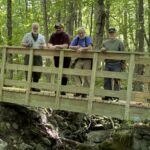
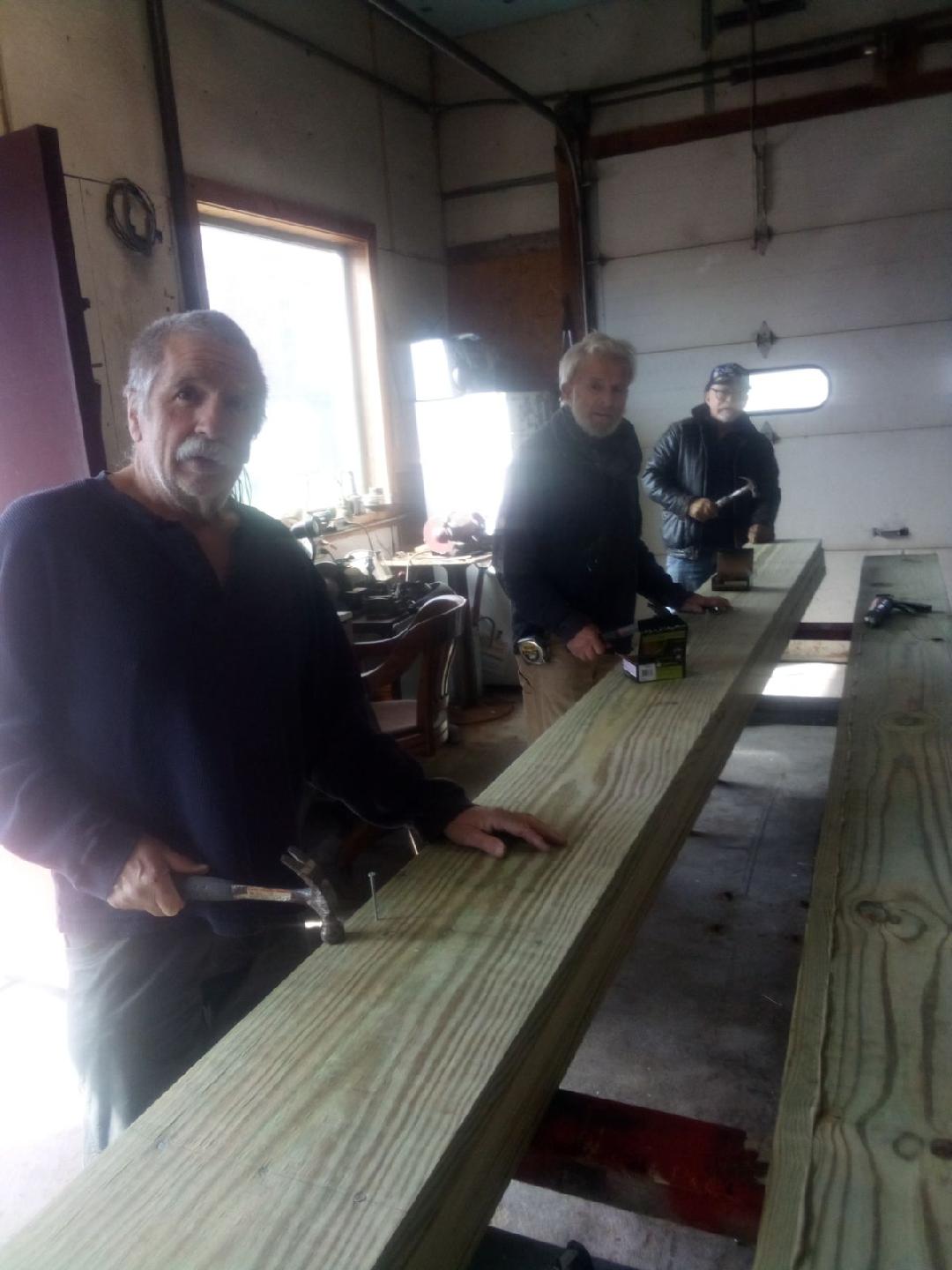
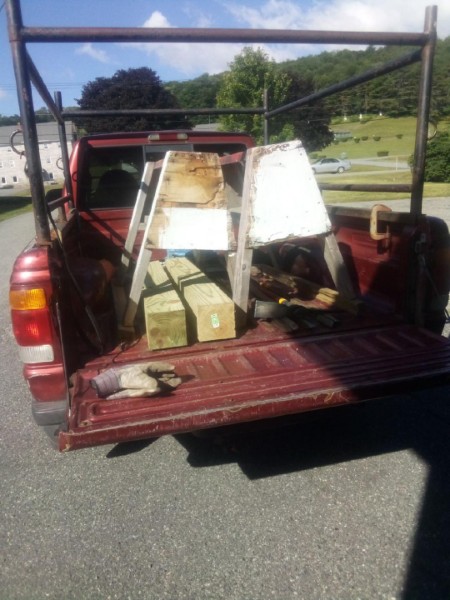
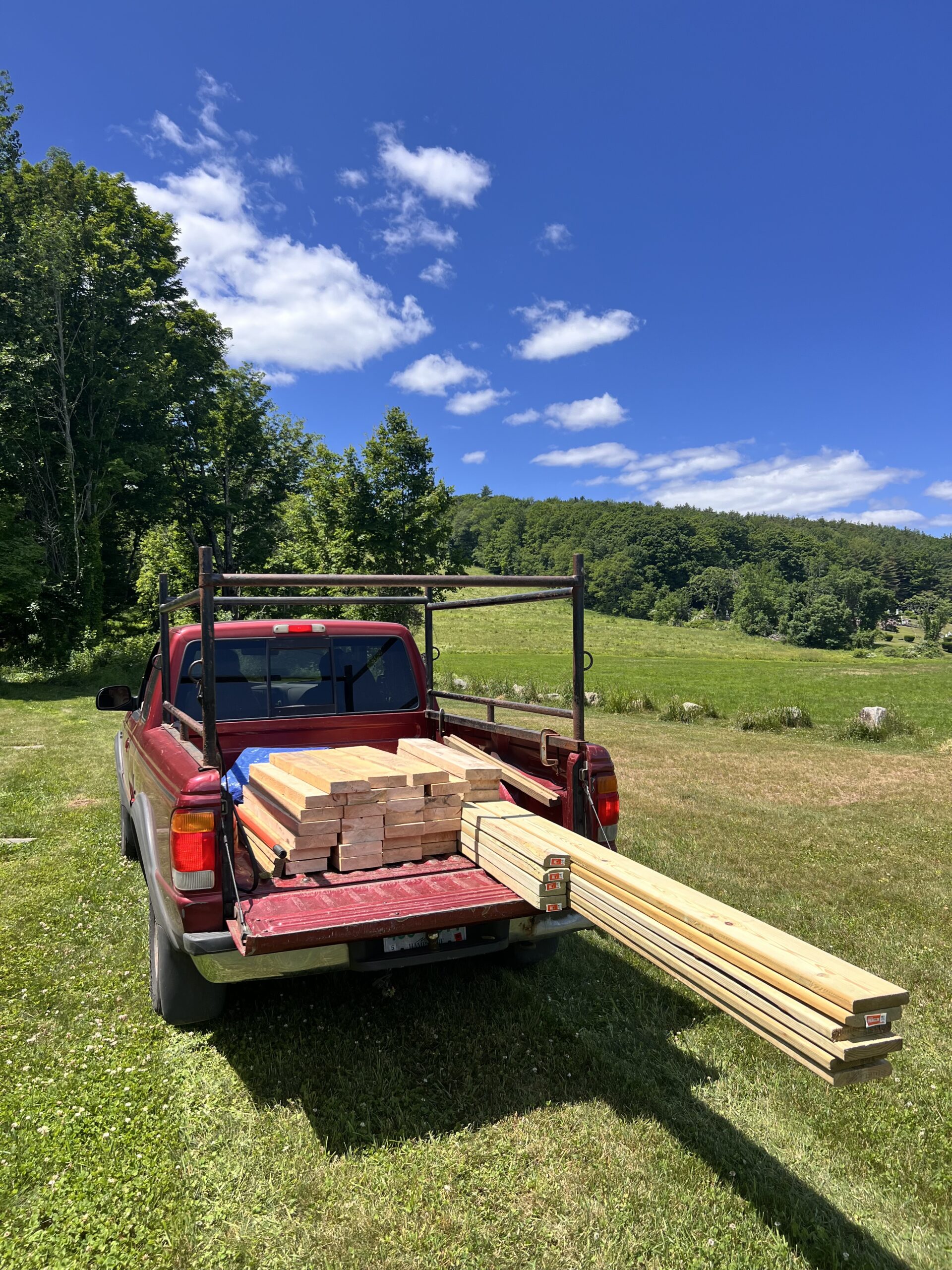
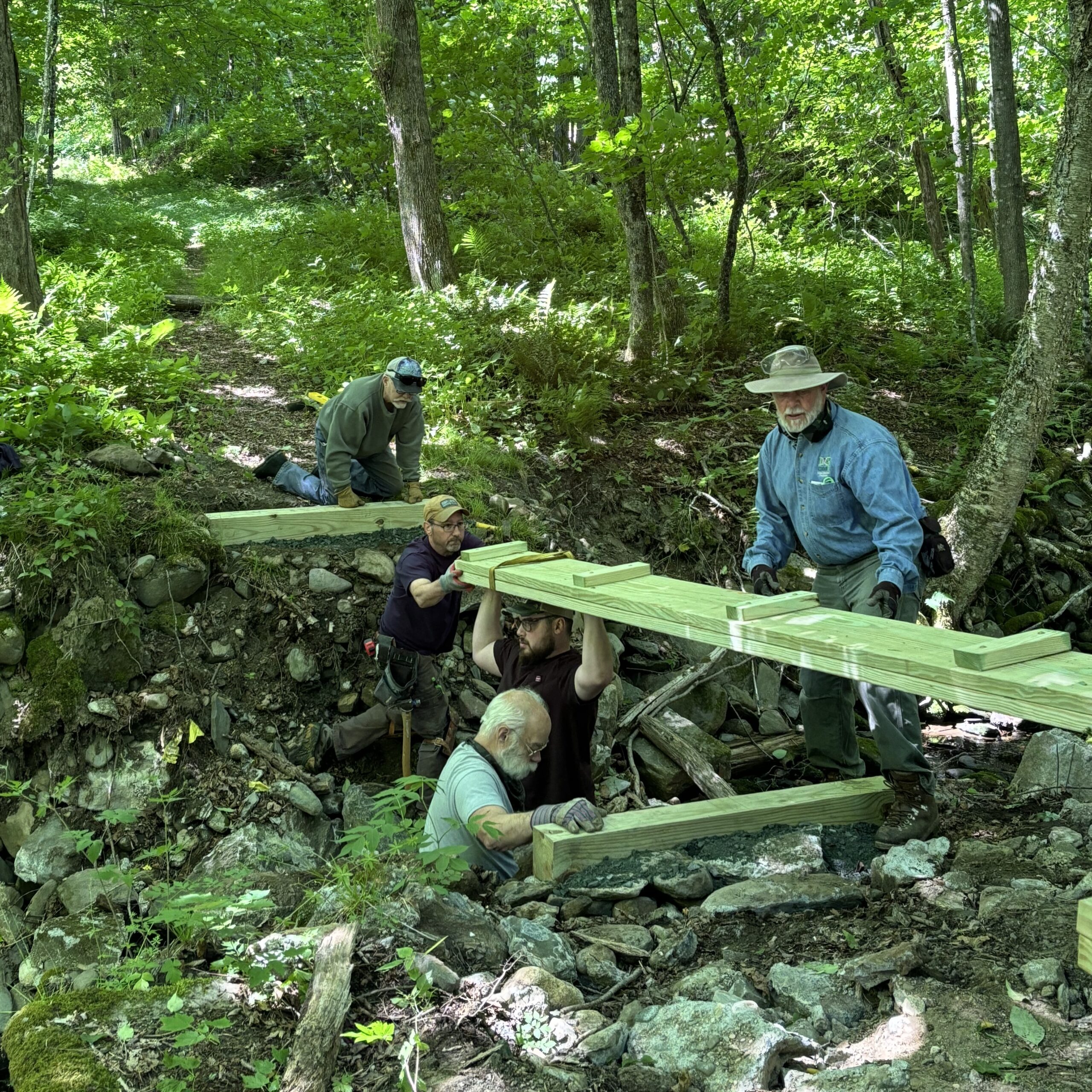

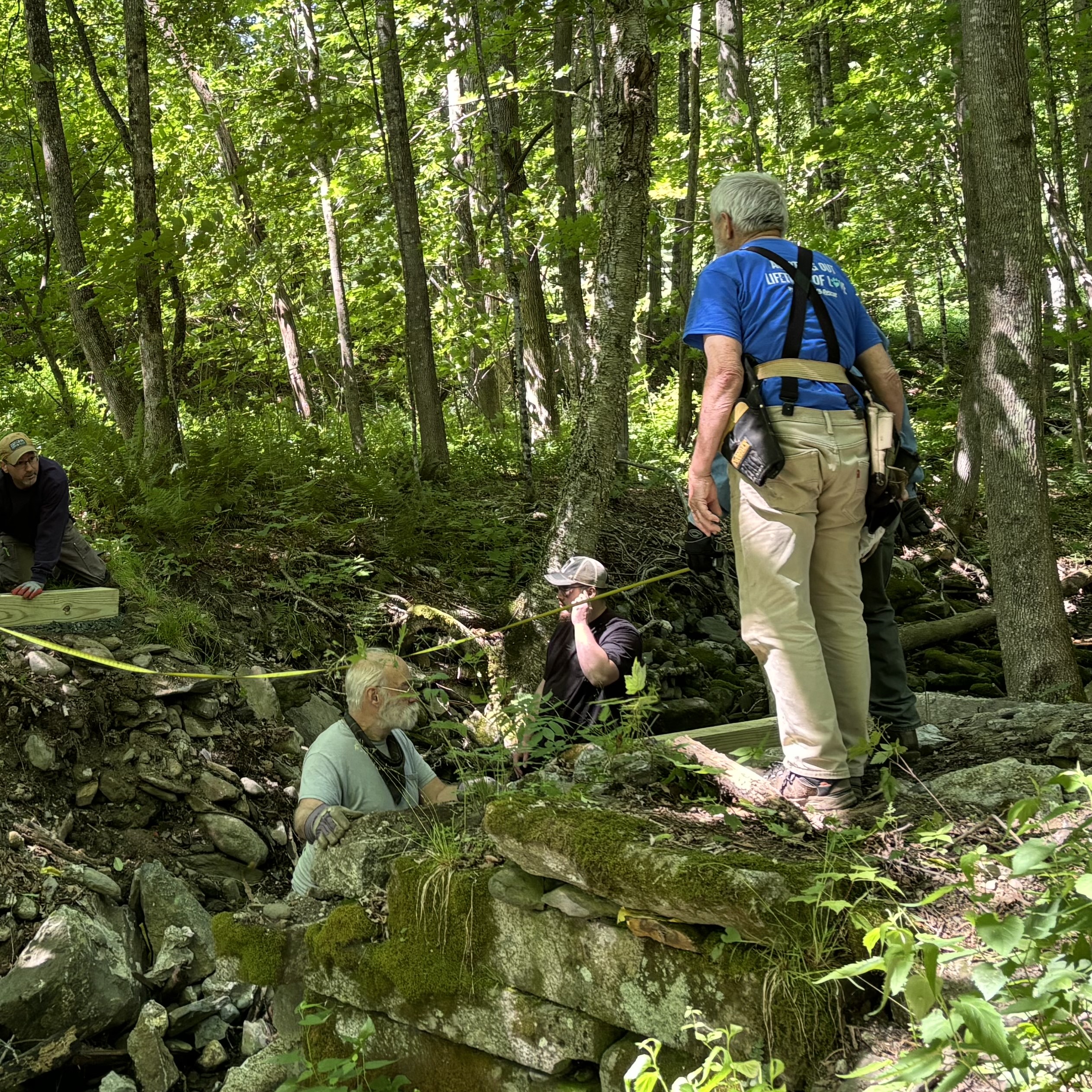
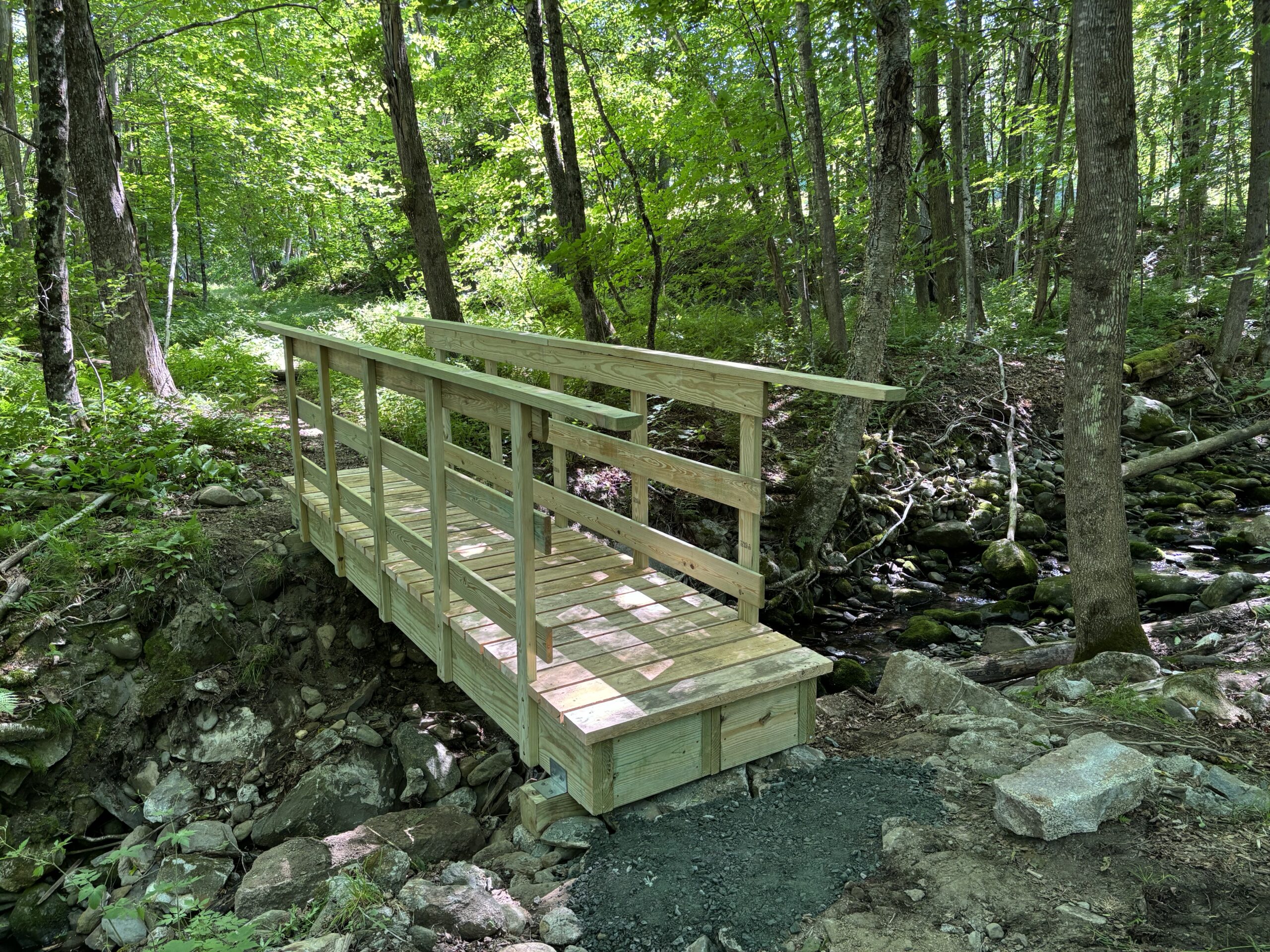
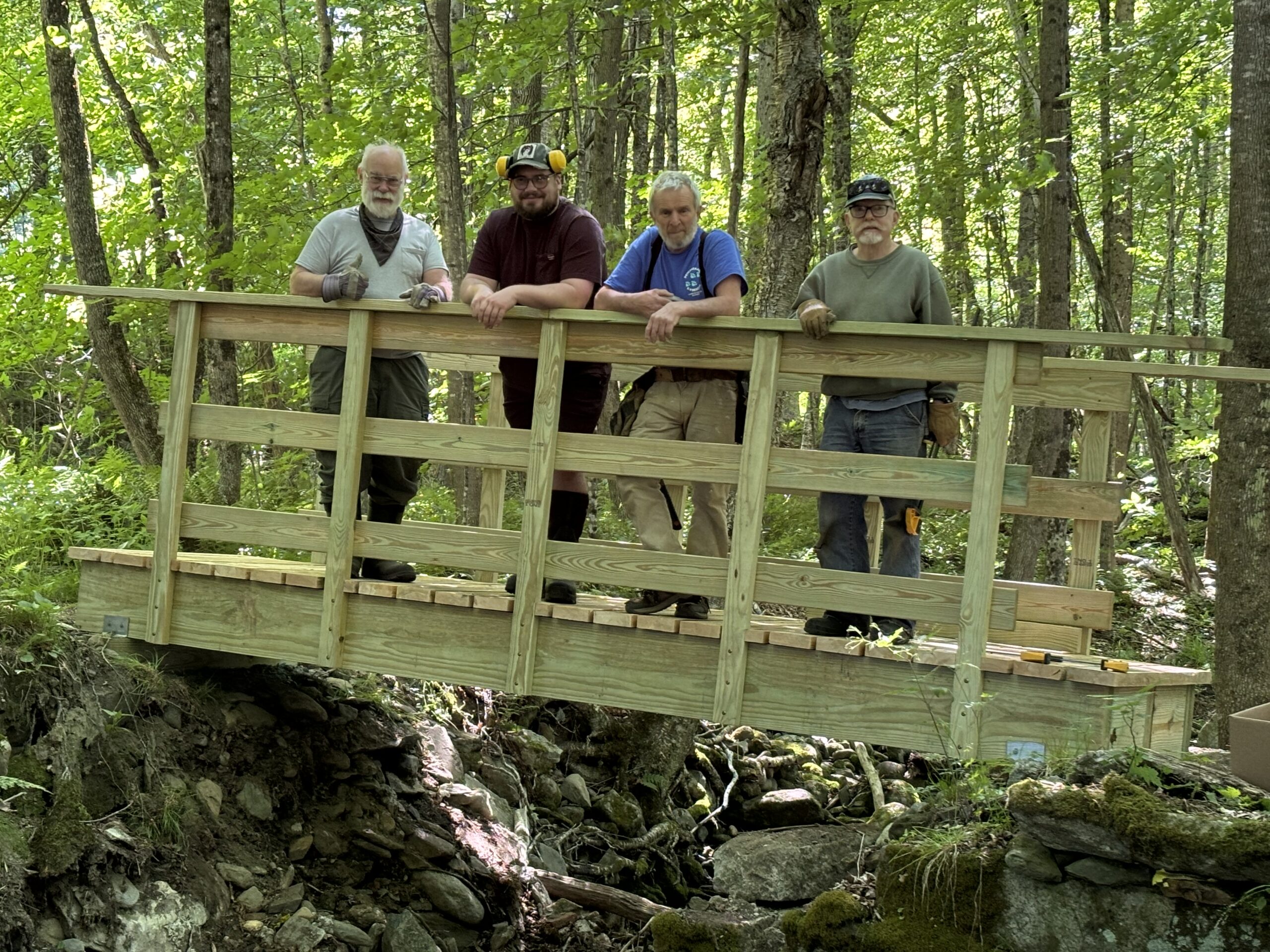

That’s one good looking bridge. Well done Highlanders,